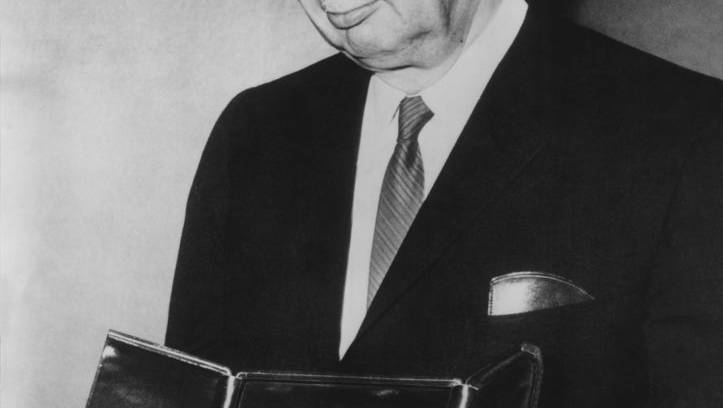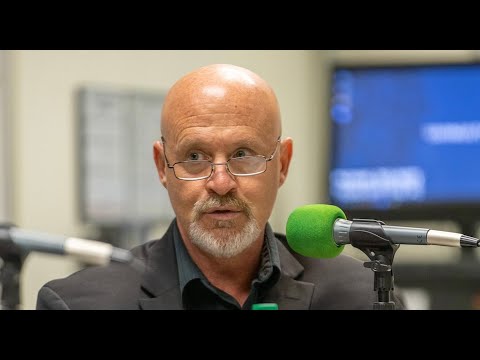news, latest-news,
While the most recognised people in science are the big names such as Curie, Newton and Einstein, there are countless others who also made significant discoveries. Like Einstein, Georg von Békésy (1899-1972) did much of his early work while employed at the post office. In von Békésy’s case, he was director of the Hungarian Telephone System Research Laboratory where he was mostly concerned with discovering ways to improve long-distance telephone transmission. Von Békésy is, however, better known (or perhaps that’s unknown outside his field) for his work on hearing. It’s rather technical and concerns how sound is perceived in the cochlear. Apparently the post office was a fairly relaxed place because they didn’t mind him wandering off to a nearby morgue where he’d poke around inside cadavers. In particular, he wanted to learn about the workings of the inner ear. That clearly interested him more than long-distance telephone transmission because he later moved on to research in universities. In 1961 he was awarded the Nobel Prize for Physiology-Medicine. His citation hints at his eccentricity: “… soon he became a nuisance to the autopsy rooms of the hospitals and the mechanical workshops of the Post Office. There they did not like to find their drill press full of human bone dust in the morning.” Presumably he used the drill press to dig into the hearing apparatus so he could study how the cochlear perceives frequencies. He set up a stroboscopic camera to take photos of silver flakes as they bounced off the basilar membrane which lines the inside of the cochlear. That allowed him to see surface waves moving along the membrane as it was stimulated by sound. Even though he was an amiable type, staff at the morgue grew tired of von Békésy so he needed to find an alternative. That led him to begin making models of cochlear using plastic. Or, more likely, he found the models to be easier to work with than the samples from the morgue. His research has proved to be essential to understanding how mammals (including humans) can hear different frequencies. The cochlear is a tapered coiled structure in the inner ear, about the size of a pea. Indeed, ‘cochlear’ is derived from the French word for ‘snail’. Sound is pumped into the cochlear via the middle ear bones, which then winds its way deeper into the coil. Von Békésy realised that the cochlear sorts sound according to frequency. Lower pitch sounds are processed towards the top of the coil, while high pitched sounds are processed in the narrow regions further in. This knowledge has been a crucial element in building the cochlear implant. The Fuzzy Logic Science Show is 11am Sundays on 2xx 98.3FM. Send your questions to [email protected] Twitter @FuzzyLogicSci Podcast FuzzyLogicOn2xx.Podbean.com
/images/transform/v1/crop/frm/Z4Q6sUEHdcmw72MBPYgZkU/c999c992-4da7-4de7-885d-48d892bf4a2e.jpg/r0_308_723_716_w1200_h678_fmax.jpg
Georg von Békésy won a Nobel Prize for his research. Picture: Getty Images
While the most recognised people in science are the big names such as Curie, Newton and Einstein, there are countless others who also made significant discoveries.
Like Einstein, Georg von Békésy (1899-1972) did much of his early work while employed at the post office. In von Békésy’s case, he was director of the Hungarian Telephone System Research Laboratory where he was mostly concerned with discovering ways to improve long-distance telephone transmission.
Von Békésy is, however, better known (or perhaps that’s unknown outside his field) for his work on hearing. It’s rather technical and concerns how sound is perceived in the cochlear.
Apparently the post office was a fairly relaxed place because they didn’t mind him wandering off to a nearby morgue where he’d poke around inside cadavers. In particular, he wanted to learn about the workings of the inner ear.
That clearly interested him more than long-distance telephone transmission because he later moved on to research in universities. In 1961 he was awarded the Nobel Prize for Physiology-Medicine.
His citation hints at his eccentricity:
“… soon he became a nuisance to the autopsy rooms of the hospitals and the mechanical workshops of the Post Office. There they did not like to find their drill press full of human bone dust in the morning.”
Presumably he used the drill press to dig into the hearing apparatus so he could study how the cochlear perceives frequencies. He set up a stroboscopic camera to take photos of silver flakes as they bounced off the basilar membrane which lines the inside of the cochlear.
That allowed him to see surface waves moving along the membrane as it was stimulated by sound.
Even though he was an amiable type, staff at the morgue grew tired of von Békésy so he needed to find an alternative. That led him to begin making models of cochlear using plastic. Or, more likely, he found the models to be easier to work with than the samples from the morgue.
His research has proved to be essential to understanding how mammals (including humans) can hear different frequencies.
The cochlear is a tapered coiled structure in the inner ear, about the size of a pea. Indeed, ‘cochlear’ is derived from the French word for ‘snail’.
Sound is pumped into the cochlear via the middle ear bones, which then winds its way deeper into the coil.
Von Békésy realised that the cochlear sorts sound according to frequency. Lower pitch sounds are processed towards the top of the coil, while high pitched sounds are processed in the narrow regions further in.
This knowledge has been a crucial element in building the cochlear implant.
The Fuzzy Logic Science Show is 11am Sundays on 2xx 98.3FM.
Send your questions to [email protected] Twitter @FuzzyLogicSci Podcast FuzzyLogicOn2xx.Podbean.com







